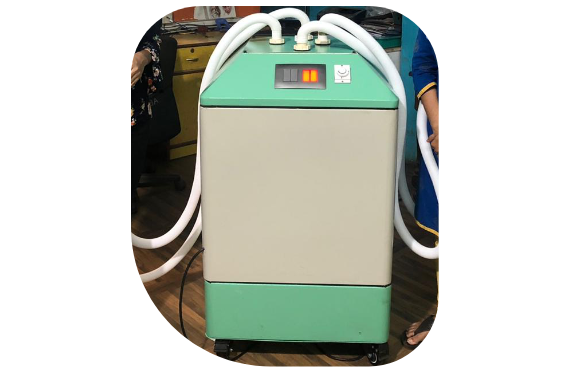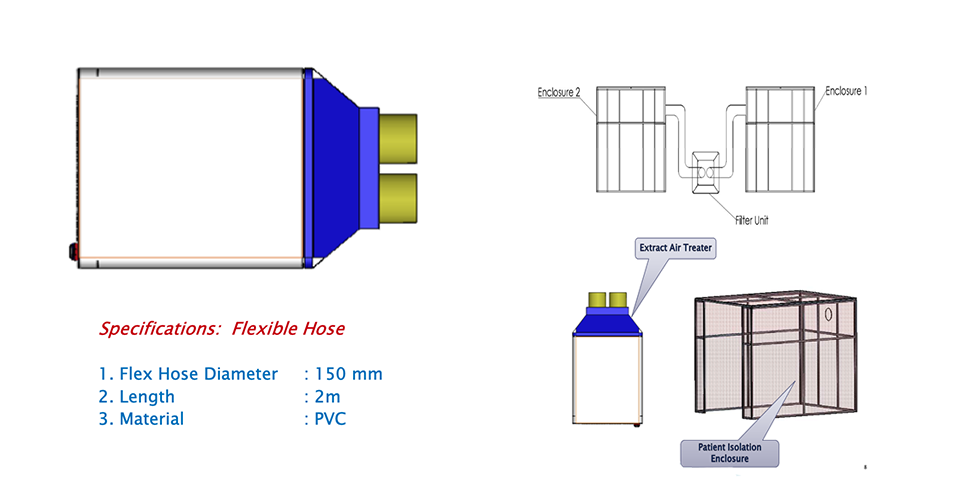
Airborne Infection Isolation System
Treating patients suffering from "Air borne infectious" diseases poses a unique challenge as these patients are capable of spreading their disease to others. This challenge is magnified multifold if these patients are in an enclose air conditioned space.
Product Description
Conducting surgeries on patients suffering from "Air borne infectious" diseases poses a unique challenge to surgeons as these patients are capable of spreading their disease to others. This challenge is magnified multifold when aerosol generating procedures are carried out on these patients in an enclosed air conditioned space, such as an operating room. The current COVID scenario presents a very complicated challenge to the hospital management.

Treating patients suffering from "Air borne infectious" diseases poses a unique challenge as these patients are capable of spreading their disease to others. This challenge is magnified multifold if these patients are in an enclose air conditioned space. Thus, in-patient services for people suffering from "Airborne Infectious" diseases and emergency services receiving patients with undiagnosed conditions who could be carriers of "Air borne infectious" diseases pose a unique challenge to the hospital management. Handling and treating these patients could expose the health care staff and the co-habitating patients to the risk of contracting the disease and could become a factor in increasing the nosocomial infection rates in a hospital. To mitigate this risk, guidelines call for these patients are to be treated in a designated negative pressure area with high air exchanges. The air extracted from this negative pressure area should be exhausted suitably or can be re-circulated back into the room after HEPA filtration. However in practice, many hospitals might face several practical constraints in implementing it. Under these circumstances, PNUETRAN AIIS becomes the perfect companion to handle these risks involved and to protect the health care staff and the other patients in the hospital. PNEUTRAN AIIS can be used to effectively to quickly upgrade a standard patient room to be safely used for treating patients with suspected or confirmed Airborne infectious diseases.
Utility features:
- Physical isolation of the patient - Reduces infection spread.
- Negative pressure in the PIE - Aids containment of aerosols.
- Clean to dirty air flow direction in the PIE - Creates a virtual barrier between the patient and the surroundings.
- High air exchanges in the PIE - Facilitates dilution of infectious agents.
- UVGI zone in EAT - Irradiates the air to inactivate the bio aerosols.
- HEPA Filtration in the EAT - Filters and removes the infectious agents from the exhaust air.
- Recirculating air cleaning in the room - Reduces the concentrations of various contaminants in the room.
Construction features:
- Aluminium extruded sections with PE sheet coverings for the PIE envelope.
- Aluminium extruded sections with PE sheet coverings for the PIE envelope.
- Transparent PVC strip curtains at the entrance of the PIE.
- EAT casing made of with powder coated strong steel.
- Tested HEPA Filter in the EAT.
- Variable speed Centrifugal blower in the EAT.
- 4 nos of UVC lights of each in the EAT (Optional).
- PVC coated flexibleduct connecting the PCIE and EAT.
Meets requirements of:
- ASHRE Standard 170
- WHO SARS Treatment Centres Guidelines
- CDC Guidelines


